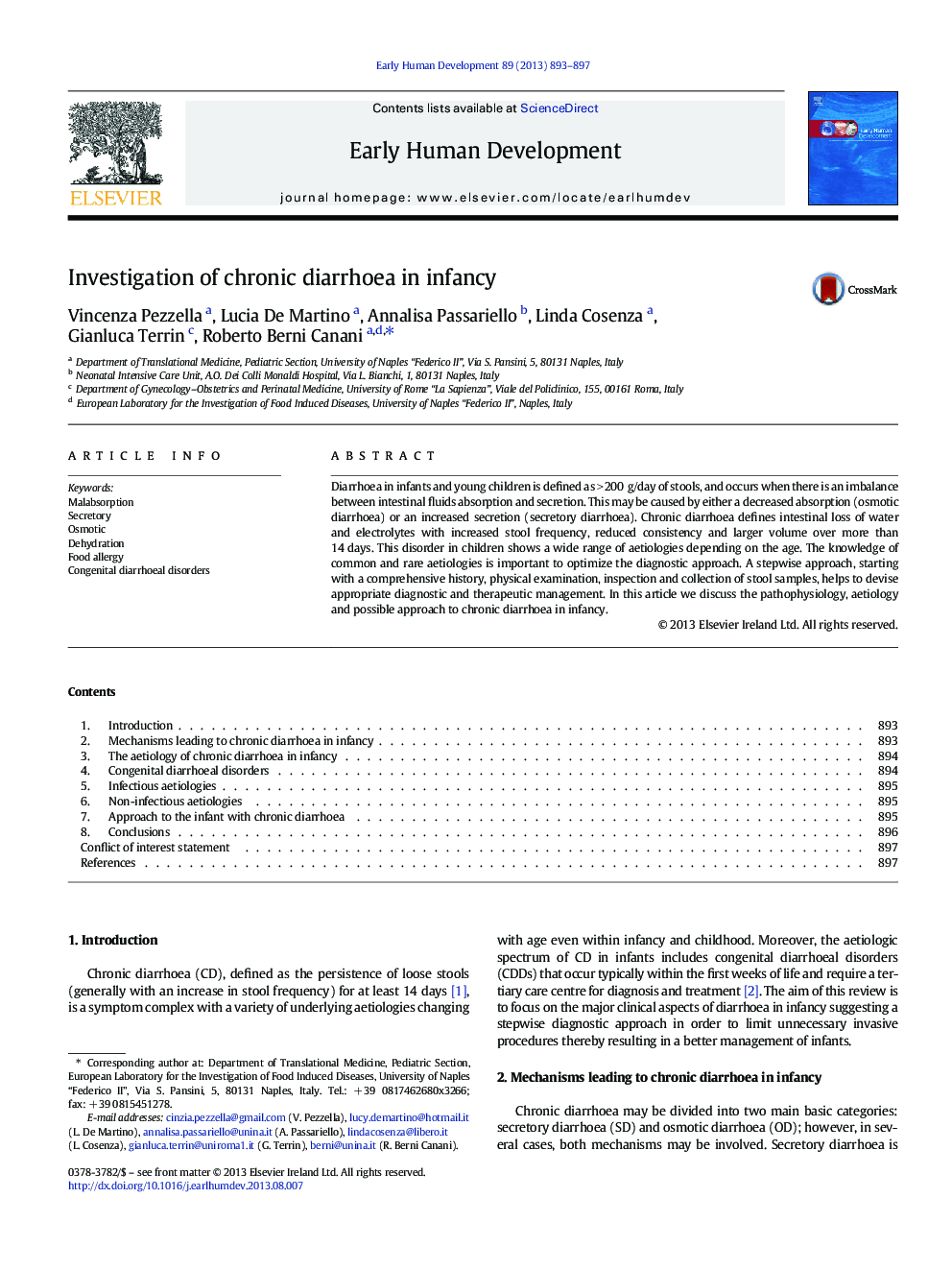| Article ID | Journal | Published Year | Pages | File Type |
|---|---|---|---|---|
| 3916754 | Early Human Development | 2013 | 5 Pages |
Diarrhoea in infants and young children is defined as > 200 g/day of stools, and occurs when there is an imbalance between intestinal fluids absorption and secretion. This may be caused by either a decreased absorption (osmotic diarrhoea) or an increased secretion (secretory diarrhoea). Chronic diarrhoea defines intestinal loss of water and electrolytes with increased stool frequency, reduced consistency and larger volume over more than 14 days. This disorder in children shows a wide range of aetiologies depending on the age. The knowledge of common and rare aetiologies is important to optimize the diagnostic approach. A stepwise approach, starting with a comprehensive history, physical examination, inspection and collection of stool samples, helps to devise appropriate diagnostic and therapeutic management. In this article we discuss the pathophysiology, aetiology and possible approach to chronic diarrhoea in infancy.
